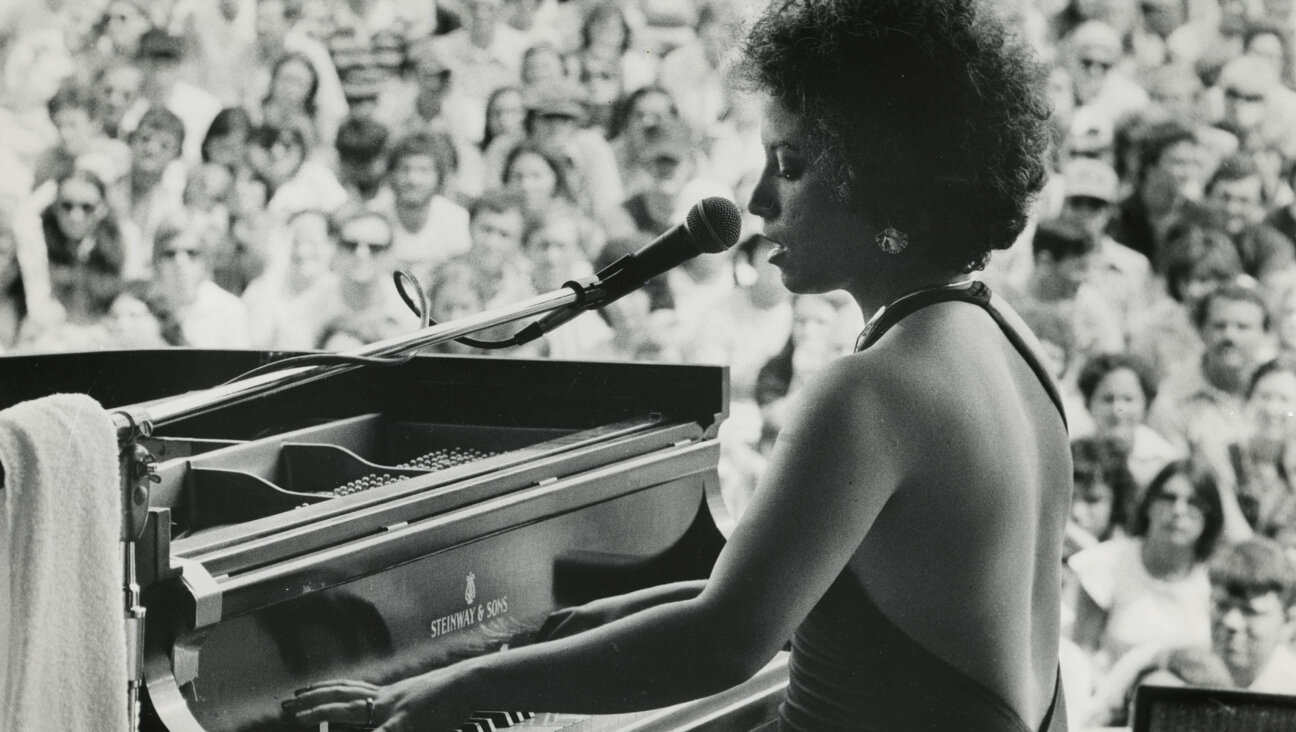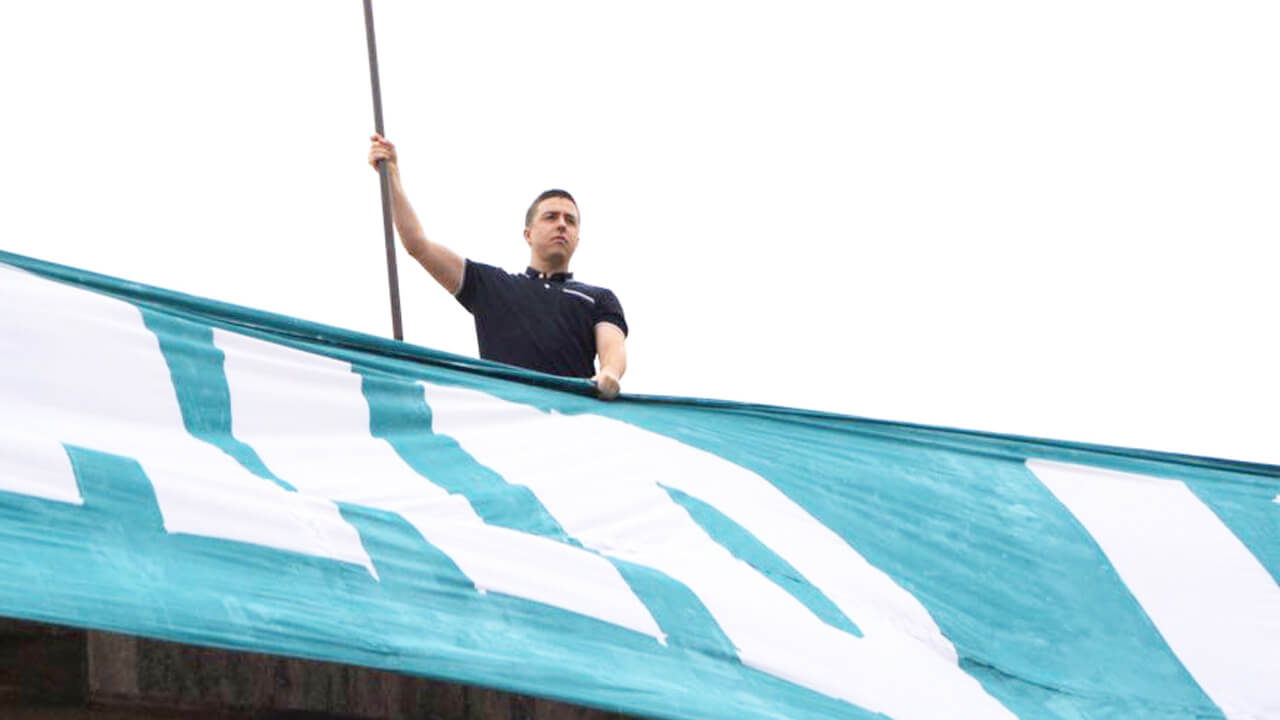A Mexican Suitcase Finds Its Context

Suitcase and Photographers: On the left is the ?Mexican Suitcase,? to the right is a Fred Stein photograph of Gerda Taro and Robert Capa on the terrace of Café du Dôme in Montparnasse, Paris. [CLICK FOR LARGER VIEW] Image by INTERNATIONAL CENTER OF PHOTOGRAPHY / MAGNuM COLLECTION
In 1939, famed war photographer Robert Capa left a suitcase of film negatives in the care of his darkroom manager, Csiki Weiss. Capa, who fled Paris for New York in advance of the German invasion, would never again see the suitcase, which held dozens of rolls of undeveloped film that he and his colleagues, Gerda Taro and David Seymour, shot during the Spanish Civil War. Indeed, the cache stayed hidden for decades and was thought lost to the world. It wasn’t until 2007 that the so-called Mexican Suitcase arrived at the International Center of Photography, the New York museum founded by Capa’s brother, Cornell Capa.
”What
“The Mexican Suitcase,” an exhibition of contact sheets printed from the recovered negatives, is on display at the ICP through January 9. Less an exhibition of photojournalism and more an examination of process, the show provides an exhilarating study of the three photographers whose shots of Republican life in 1930s Spain helped launch the art of modern war photography.
With the suitcase long gone, the show pulls from three cardboard containers, like oversized boxes of chocolate, that held 126 rolls of film, or almost 4,500 negatives. Details of the boxes’ journey are still blurry, but the first hint of their existence surfaced in 1975, in a letter Weiss wrote: “I put all Bob’s negatives in a rucksack and bicycled it to Bordeaux to try to get it on a ship to Mexico. I met a Chilean in the street and asked him to take my film packages to his consulate for safekeeping.” Shortly after, the darkroom manager was interned in Morocco. He made it to Mexico in 1941, but by then the negatives were lost.
”A
Over the years, Cornell Capa tried to track them down, taking out an ad in a French photography magazine in 1979, when Robert Capa’s work appeared at the Venice Biennale, and conducting a dig in the French countryside.
Meanwhile, the rolls of film wound up in the hands of General Francisco Aguilar González, Mexico’s ambassador to the Vichy government in 1941. Gonzalez died 30 years later, and at some point his nephew, Mexican filmmaker Benjamin Tarver, discovered the negatives among his uncle’s possessions. Tarver didn’t know what he had, so in 1995 he sought out the advice of a New York professor, who happened to be a friend of Cornell Capa’s.
For years, Tarver was “elusive” and “disinterested” in working with the ICP, in the words of assistant museum curator Cynthia Young. Eventually, however, an independent curator based in Mexico City persuaded Tarver to hand over the boxes, sans payment, in advance of the ICP’s 2007 exhibition of Capa and Taro’s well-known Spanish War photography.
”Suitcase
All the more miraculous is the condition of the film: It was so well preserved in the dry climate of Mexico City that experts skipped restoration efforts and went straight to creating modern contact sheets from the negatives. In a process that took over a year, conservationists used a specially designed device to hold the brittle film while they captured each frame with a high-resolution digital camera.
“The Mexican Suitcase” groups these contact sheets, collage-style, with corresponding photographs from the ICP archives, accompanied by the pages of the magazines — Life, Regards, Ce Soir — where a fraction of the images had been published during wartime. (Subsequent reproductions have come from those prints.)
The overall effect is a wealth of contextualization. Witness Capa’s half dozen attempts to get the right shot of Loyalist General Enrique Lister, which appeared on the cover of Regards. Or the progress that Taro’s camera made through a Valencia morgue — some of her most graphic images — including a few that should be familiar to anyone who visited the 2007 show. It also puts to rest any confusion about an iconic image taken by Seymour, who was known as Chim: a woman scanning the skies at a land-distribution meeting, baby clasped to her breast. For years, the scene was mistakenly identified as an air raid.
Initially, Capa and Taro published under a joint byline, making it difficult for archivists to credit their works. But the labeling on the rolls of film in the suitcase identifies which photographer shot which roll. The new information highlights their different styles: Capa’s insistence on chasing the action, Chim’s attention to individual portraiture and Taro’s more formal compositions.
Refugees of sorts, the three photographers came to Paris for its freedoms — Capa from Hungary, Taro from Germany and Chim from Poland. They met in 1934 and, soon after, Capa and Taro became lovers. After war broke out in Spain in mid-1936, the émigrés — staunch supporters of the democratically elected Spanish government — departed the French capital. Their photographs bolstered the anti-Fascist propaganda effort and, in some cases, corrected news reports that favored the victorious Nationalists, led by General Francisco Franco.
The rolls of film also contain newly discovered images, such as Chim’s portraits of the Republican speaker Dolores Ibarruri, known as La Pasionaria, and the poet Federico Garcia Lorca, photographed days before he was killed. Taro’s pictures of the Battle of Brunete, where she was fatally run over by a tank in 1937, are all on display. A series of shots Capa took of a French internment camp — a subject excluded from the propaganda — illustrates the desolation of the Republican exiles.
Even in miniature, the images have an awesome power. But more remarkably, the exhibition exposes what we lose with digital photography: the telling paper trail of pictures, from negative to contact sheet to photograph to periodical.
In early 1939, Capa began shooting multiple frames of the same subject, complementing his experiments with a movie camera. One photograph from the archives shows a group of cloaked exiles hunched against the wind, their individual features pinched. The contact sheet, however, shows the frames Capa took before and after: The first shows a blur of figures who march into focus as the roll of film advances. “The Mexican Suitcase” allows for that rare glimpse behind the lens, revealing for the first time where Capa stood and how his subjects moved in front of his camera. And although he doesn’t appear in the shots, you can almost see Capa on the horizon, clicking the shutter as the men get closer and closer.
Leigh Kamping-Carder covers visual culture, legal news and Canadiana. Her work has appeared in The Walrus, the New York Observer and other publications.
The Forward is free to read but not free to produce

I hope you appreciated this article. Before you go, I’d like to ask you to please support the Forward.
At a time when other newsrooms are closing or cutting back, the Forward has removed its paywall and invested additional resources to report on the ground from Israel and around the U.S. on the impact of the war, rising antisemitism and polarized discourse.
Readers like you make it all possible. We’ve started our Passover Fundraising Drive, and we need 1,800 readers like you to step up to support the Forward by April 21. Members of the Forward board are even matching the first 1,000 gifts, up to $70,000.
This is a great time to support independent Jewish journalism, because every dollar goes twice as far.
— Rachel Fishman Feddersen, Publisher and CEO






















